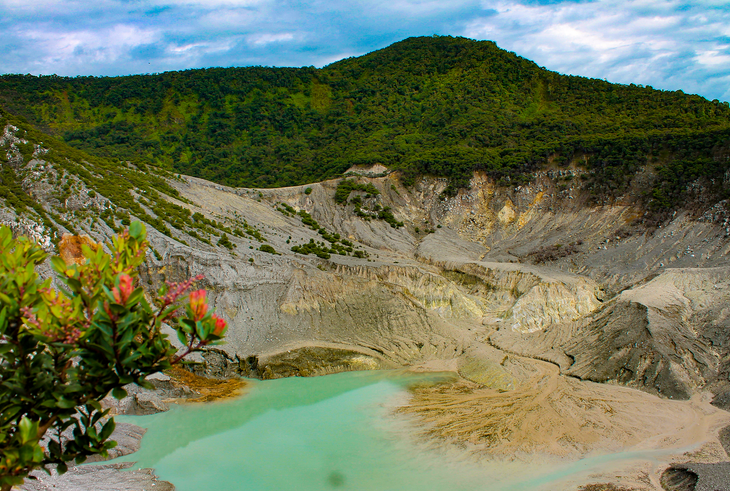Tangkuban Perahu, A Popular Tourist Destination In Bandung

About Tangkuban Perahu
Tangkuban Perahu is a stratovolcano located in the province of West Java, Indonesia. It is situated about 30 kilometers north of the city of Bandung and is one of the most popular tourist destinations in the area. The name “Tangkuban Perahu” means “upturned boat” in Sundanese, which is the language of the indigenous people of West Java.
The volcano is part of a volcanic complex that includes several other peaks, including Mount Burangrang and Mount Bukit Tunggul. It is approximately 2,084 meters high and has a crater that is approximately 600 meters in diameter. The last eruption of the volcano was in 2019, although it is considered to be a low-risk volcano.
The Tangkuban Perahu volcano is steeped in local legend and mythology. According to Sundanese folklore, the volcano was once a beautiful princess named Dayang Sumbi. She fell in love with a handsome young man, but their love was forbidden. In a fit of rage, Dayang Sumbi killed the young man and buried him in the earth. The young man then turned into the mountain that we now know as Tangkuban Perahu.
Read: The Most Popular and Must-Visit Tourist Attractions in Bandung
Tangkuban Perahu is a Popular Tourist Destination
Today, Tangkuban Perahu is a popular tourist destination that attracts both locals and foreigners. The main attraction of the volcano is its crater, which can be accessed via a road that leads to the rim of the crater. Visitors can walk around the rim of the crater and enjoy stunning views of the surrounding landscape.
In addition to the crater, there are several other attractions at Tangkuban Perahu. One of the most popular is the Ciater Hot Spring, which is located at the foot of the volcano. The hot springs are believed to have healing properties and are a popular destination for both tourists and locals.
Another popular attraction at Tangkuban Perahu is the Kawah Domas crater, which is located on the south side of the volcano. The crater is accessible via a hiking trail and offers visitors the opportunity to see boiling mud pools and steam vents up close.
Visitors to Tangkuban Perahu can also enjoy a range of outdoor activities, including hiking, horse riding, and camping. There are several camping sites located around the volcano that offer basic facilities for campers.
In addition to its natural beauty and cultural significance, Tangkuban Perahu is also an important site for scientific research. The volcano is part of the Cimandiri volcanic complex, which is one of the most active volcanic regions in Indonesia. Researchers study the volcano to better understand volcanic processes and to develop strategies for mitigating the risks posed by volcanic activity.
Despite its popularity, Tangkuban Perahu has faced some challenges in recent years. The 2019 eruption of the volcano caused significant damage to the surrounding area, and many residents were forced to evacuate their homes. The eruption also caused the closure of the volcano to tourists for several months.
In addition to the risk posed by volcanic activity, Tangkuban Perahu is also facing environmental challenges. The increasing number of tourists visiting the volcano has led to issues with littering and other forms of environmental degradation. Local authorities have implemented a range of measures to address these issues, including increasing the number of trash bins and imposing fines for littering.
In conclusion, Tangkuban Perahu is a fascinating and beautiful destination that offers visitors the opportunity to explore the natural beauty and cultural significance of Indonesia. From its stunning crater to its hot springs and hiking trails, the volcano has something for everyone. While the challenges facing the volcano are significant, efforts are being made to preserve and protect this important site for future generations to enjoy.


